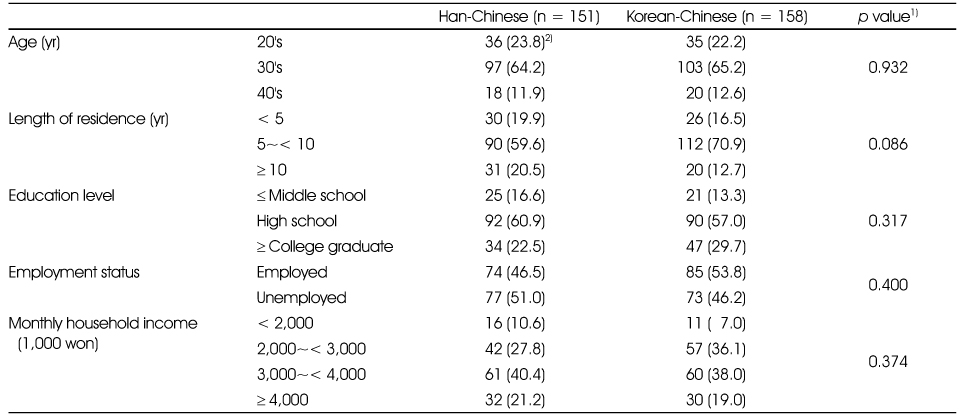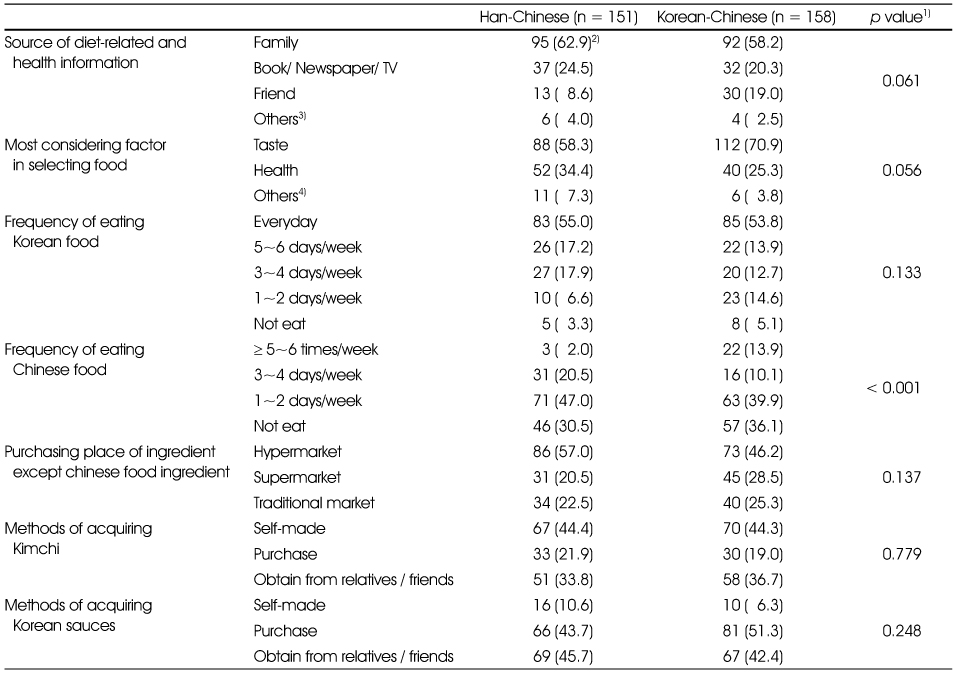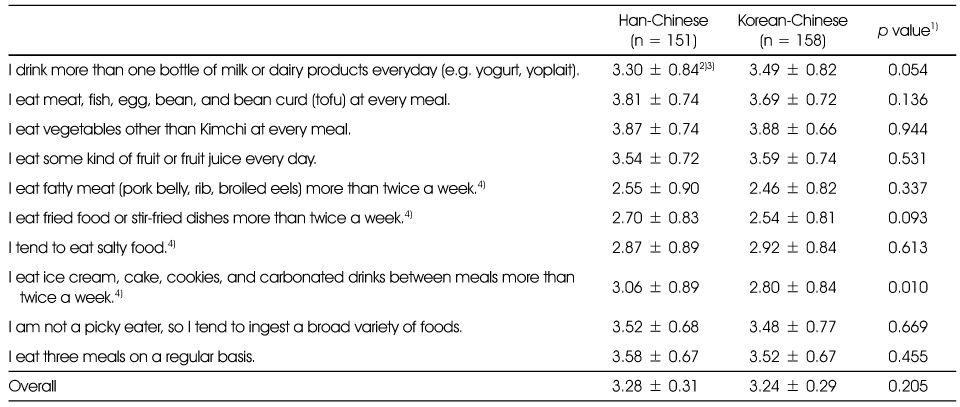Chinese Female Marriage Immigrants' Dietary Life after Immigration to Korea : Comparison between Han-Chinese and Korean-Chinese
Article information
Abstract
Objectives
This study was conducted to investigate Chinese female marriage immigrants' dietary life after immigration to Korea, focusing on comparison between Han-Chinese (traditional Chinese) and Korean-Chinese (Chinese of Korean descent).
Methods
An in-person survey was conducted with women married to Korean men, having one child or more aged 1-6 years old, and having resided in Korea for at least one year before the survey. The data were collected from the 309 respondents comprising 151 Han-Chinese and 158 Korean-Chinese in the summer of 2013.
Results
Overall, there was no significant difference in dietary practice, dietary acculturation, dietary behavior, dietary habits, and food intake between the Han-Chinese and the Korean-Chinese respondents. Over 50% of the respondents ate Korean food every day. The overall level of dietary acculturation was about 3.5 out of 5 points. The average score of healthy dietary behavior was a little bit higher than 3 out of 5 points. Approximately 3/4 of the respondents showed increasing frequency of eating out. The respondents reporting increase food diversity were over 70%. Decreased frequency of skipping meal was about 60% of the respondents. Over 50% of the respondents showed increasing consumption of Kimchi, vegetables, fruit, and meat.
Conclusions
Dietary life of Korean-Chinese female marriage immigrants was similar to that of Han-Chinese female marriage immigrants after immigration to Korea. The results from this study suggest that not only Han-Chinese but also Korean-Chinese should be targeted in various diet-related acculturation support programs as important multicultural populations in Korea.
Notes
This research was supported by Multicultural Human Ecology Center, Research Institute of Human Ecology, Seoul National University.






